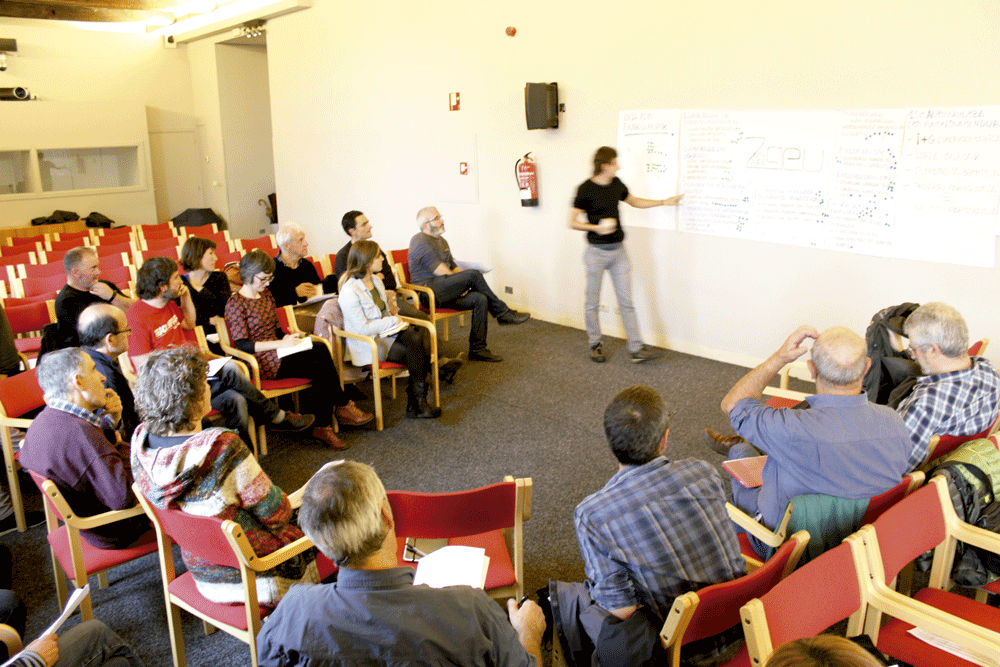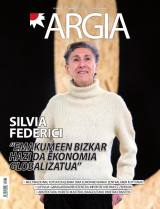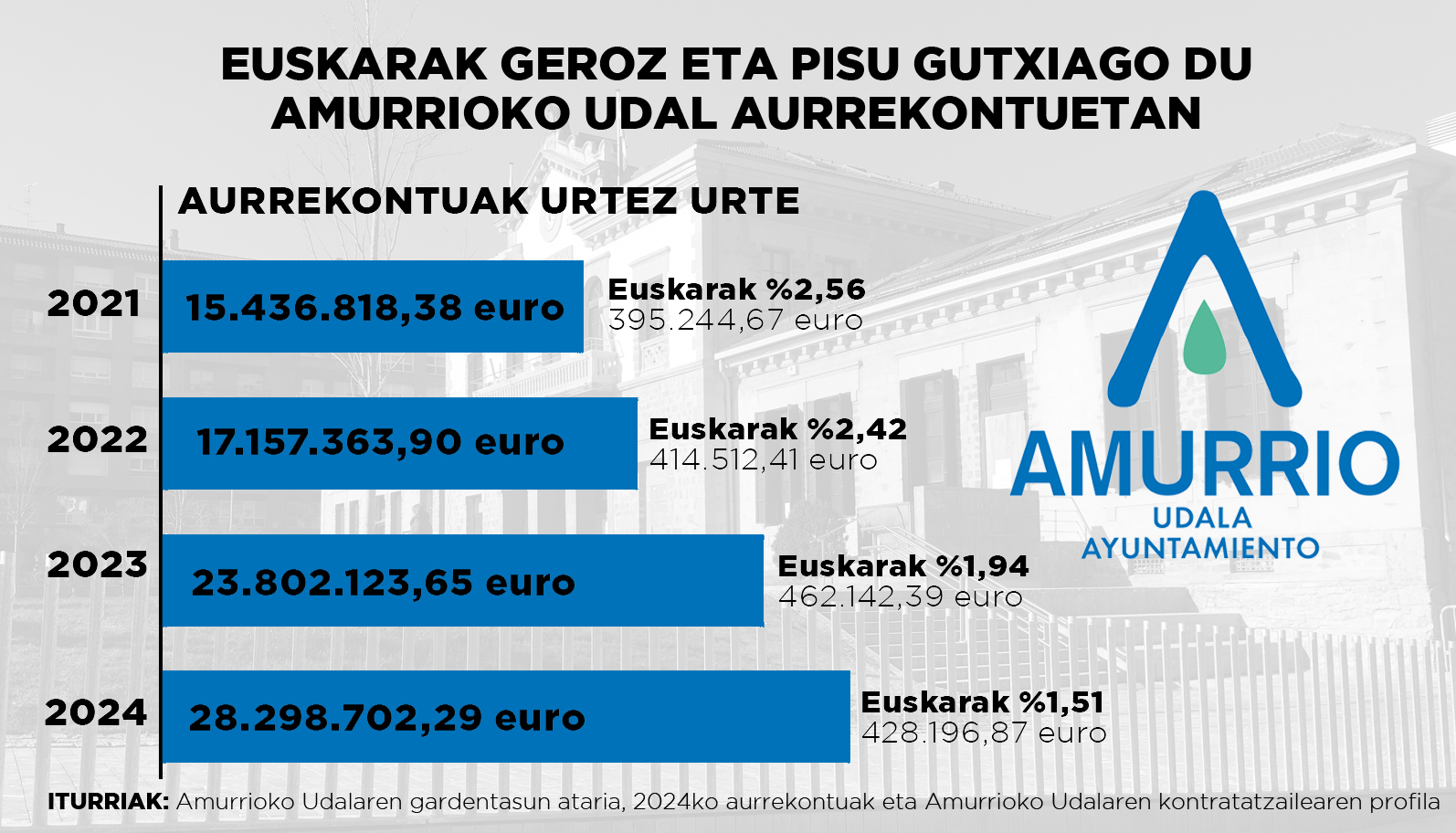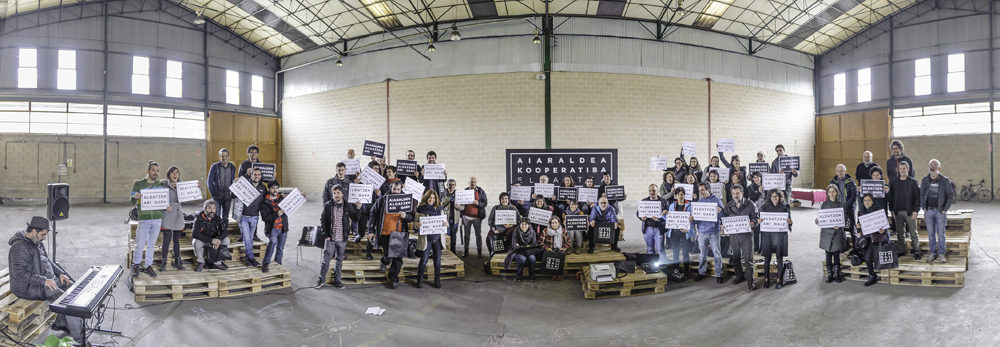The Geu Association represents the Basque Vitoria of the future
- Last fall, 22 October and 5 and 19 November, at the Casa del Euskera Oihaneder, the reflection sessions Zeu zara Geu were held. Twenty people valued the road travelled for 25 years, but above all imagined the Vitoria-Gasteiz of Euskaldun of the future and reflected on the role that the GEU Association should play in this hypothetical Vitoria-Gasteiz of Euskaldun. In addition to the association's partners, other Euskaltzales who live in the town also attended the meeting.

In the session on 22 October, following a similar, welcome and dynamic introduction of mutual knowledge, Iñaki Telleria e Iker Martínez de Lagos, member of the Euskaltzaleen Topagunea, addressed the functions of the Euskaltzales associations. To do so, two points of view were taken into account: the first, we would have the three dimensions we used to analyze the situation of the language, that is, the speaker, the linguistic community and the territory; while the second point would be the corresponding to the work of the Basque associations: doing, influencing or being.
The first exercise of the program focused on the “Vitoria-Gasteiz euskaldun of 10 years”, and that was the first question that was raised, that is, how the Vitoria-Gasteiz euskaldun of the future will be. The participants, with this objective in mind, started to set priorities for the coming years, after a great deal of ideas. Among the priorities identified are the need for a turning point for a positive change; to share strategic and realizable objectives, daily; to work on the activation of Euskaldunes; to use social pedagogy; to drink not only of the sociolinguistics, but also of the psycholinguistics; to move from macro to micro; to transmit from awareness, the practical functions of the language from the social need; to gain reference spaces, to attract the creators
In the second session, they recovered the priorities identified in the first and began to propose actions with the objective that in the following years the activity would be a battery with three objectives. The first would be the activation and sensitization of the community and individuals. In Vitoria-Gasteiz it was proposed as an exercise of collective empowerment of the speakers that are spreading in the Basque Country. They took as an example the 75 hours of Agurain in Euskera, the Basque Day of Egia in Donostia, the 40-day challenge of Lasarte-Oria, the Basque Country of Hernani... In case some kind of activity was carried out in Vitoria-Gasteiz, the participants discussed pilot experiences in different neighborhoods or do so throughout Vitoria-Gasteiz.
The reference would be the second objective, and in this regard, it was proposed to work in Vitoria-Gasteiz on a global vision of the Basque Country and the Euskaldun community and to develop a communication plan. This would inevitably mean strengthening Geu's brand, making Geu a qualified voice over Euskera and also being a reference for the media.
The third of these goals would be to influence the institutions and agents, for which the creation of spaces of trust was approved with the City Council of Vitoria-Gasteiz and the Provincial Council of Álava, public institutions. Likewise, the structure of the Basque country in Vitoria-Gasteiz.

Finally, the fourth objective would affect the use of Euskera among children and young people. For this, it was said that the priority is for the Basque people to gain prestige, “a strategic line”. Two specific projects were also proposed, such as “Kuadrilategi”, and the creation of a free time group within the Geu association.
In the session of November 19, third and final, the attendees identified the interest groups of the Geu association, priority interest groups for the Geu and Euskaltzales association of Vitoria-Gasteiz, either because they are objectives of Geu's actions and strategies, or because they are allies and collaborators for Geu. At the same time, interest groups took this into account and deepened the actions. The actions proposed in the activation and in the work groups for child and youth use were defined, in addition to giving content to the communicative objectives to work on the essentiality.
Conclusions awaiting
Despite this process of reflection, the Geu association still does not want to assess the conclusions. As Gidor Bilbao, from the group of dynamizers, told us, “we have left some time on purpose to look at what was received with a broader perspective.” However, the professor of the UPV/EHU Bilbao has been able to advance the priorities for the coming years: “To influence institutions and others; to achieve the referentiality of the association; to influence the use of childhood and youth; and, finally, to raise awareness and activate the community and individuals”. On the other hand, as has been known, concrete projects have also been proposed for these lines.
Asked whether the reflection that has been made in Vitoria-Gasteiz could be extended to the rest of the Alavesas counties, Gidor Bilbao has no doubt: “Methodology and dynamics are valuable – they have served us elsewhere – but reflection cannot be shared; even if it is to reach the same conclusions, each community has to make its own reflection”. Everyone has their work and their reflection.
Lehen saioan egindako ariketarik bat, elkartearen gainekoa zen. Geu elkartearen iraganari, orainari eta etorkizunari begiratu zioten gogoeta prozesura bildutako partaideek, bi galdera ardatz harturik. Lehen galdera, hauxe: “Zer dakizu eta zer ez dakizu Geu elkarteari buruz?”. Bigarrena, aldiz, “Zeintzuk izan behar dira zure iritziz Geu elkartearen erronkak etorkizunean?”. Ez dago esan beharrik asko egiten duela Geu-k Gasteizen, besterik da gasteiztarrek horren berri xuxen duten. Esaterako, jakina da Mintzalaguna egitasmoa kudeatzen duela elkarteak, baina jendeak ez daki mintzalagun kopurua emendatuz doala urterik urtera. Gasteiztarrak ez daki, adibidez, Alea astekariaz Geu arduratzen dela eta Alea fm irratsaioa ere bere esku duela, guraso elkarteekin hainbat lan egiten duela eta aholkularitza eta prestakuntza eskaintzen dizkiela –baita begiraleei ere–, ibilbide gidatuak antolatzen dituela, “Geu-rekin mendira” programa…
Ohi denez, elkartearen egitura eta funtzionamendua zeharo arlo ezezaguna zaie gasteiztarrei: nor dagoen Geu-ren atzean, zenbat bazkide dituen, zein ezaugarri dituzten bazkideok, zein funtzio duten, nola komunikatzen diren bata bestearekin elkartea eta bazkideak, eta abar.
“Izaskun Arrueren urratsen atzetik” liburua idatzi du Miel Anjel Elustondok. Azken hamarkadetan Gasteizen eta Araban euskararen bilakaera eta Ikastolen sorrera nolakoa izan zen aztertu du. Izaskun Arrue Arabako Ikastoletako “lehen andereñoa” izan... [+]





















